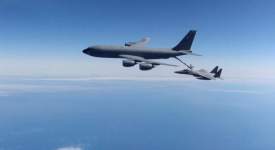Some economies in East Asia have built up large amounts of foreign exchange reserves in the past decade and a half. Holding large amounts of reserves have helped these economies to stabilize their macroeconomic conditions and exchange rates under periods of huge market stress and shifts in relative economic size. In the wake of the financial crisis, there has been an animated debate about global imbalances and foreign reserve accumulation. In the decade before the financial crisis, emerging economies accumulated reserve holdings of over 5 trillion USD that then served as a powerful defence against external turbulence during the critical period of 2007-9. This has led the International Monetary Fund (IMF) to argue in its 2011 paper that “countries with adequate reserves generally avoided large drops in output and consumption, and were able to handle outflows of capital without experiencing a crisis.”
However, the IMF and many others have concurrently questioned whether higher reserves are always better and argued that excess reserves held by China and other countries are destabilising the global economy. The IMF argued in a much-discussed analysis in 2011 that in the new post-crisis environment it is necessary to reconsider the adequate levels of reserves and establish a metric for the reserve needs of emerging markets and low-income countries. An alternative approach is to consider not the amounts of reserves but how they are invested. A country like China, which has at its disposal foreign exchange reserves amounting to about 45 percent of its gross domestic product (GDP), is paying greater attention to the deployment of its reserves as it fears that Western debt-monetization will erode the value of its current holdings. In short, existing rules aimed at limiting foreign reserves, in order to prevent currency manipulation, have been discussed over a long period of time. Yet, to date, there have been no rules that come with effective enforcement mechanisms – and it is unlikely that such rules can be agreed multilaterally, at least for the foreseeable future.
There is one part of this debate that refuses to go away – the charge that China is a “currency manipulator” and that it runs a foreign exchange reserve policy that destabilises the world economy. The US Treasury has been close to naming China a currency manipulator but yet refrained from doing it officially. It keeps pushing China to allow a faster appreciation of the renminbi, but in recent years argued that the decline in China’s current account surplus, due to appreciation of China’s real effective exchange rate, has helped to reduce the US current account deficit. This position is, however, questioned by economists that consider China a currency manipulator and argues that it should merit action by US authorities. To that end, it has been suggested that the US government should seek to devise measures against currency manipulation in trade agreements such as the Transpacific Partnership (TPP) that is currently being negotiated and also implement a “strong currency manipulation discipline” in defence of the country’s exports.
A fresh poll has revealed that Americans consider China as their “nemesis”, because they see its growing economic power as a “critical threat” to “the vital interests” of the United States. Could then be seriously assumed that China – the US current largest foreign creditor – covets the idea that America goes bankrupt? Actually, China has no way to go selling its stake in dollar-denominated securities in a short time as the move would trigger a precipitous fall in the dollar’s value, thus also reducing the value of all dollar-based securities that China continued to hold. In addition, assuming the US economy deteriorated under this scenario, exports to America would swell up quite a bit. At this point, there would be an intense political pressure in the US to strike back by imposing tariffs on Chinese goods and taking other retaliatory measures.
Yet, China selling or not in a blip its huge amount of dollars’ reserves is more of a distraction. What mainly worries the US administration could be exactly a development to the contrary. China’s determination to re-balance the country’s economy into a domestic led growth could turn out to be a major issue between the two countries. The US has also been warned that it is likely to feel pressure while Chinese government seeks to shift its policy from a surplus saving to one emphasizing the absorption of its population’s massive savings, as China would prefer to provide support for the safety net of its own citizens rather than offering such support for American citizens. With the US Fed set to conclude T-bonds buying next October, US government needs to appease rather exacerbate the relations with its foreign creditors, and especially so, China.
These developments add to the urgency for the US to address the debt issue. By rising above the stigma attached to debt restructuring, and agreeing to get down to a debt-to-equity diplomacy, Washington is more likely to regain the trust of its main debtor, while gaining fresh money to flow into the country. The so-called “US-China Strategic and Economic Dialogue” (S&SD) where the two powers seek to address, since 2009, with little fanfare common financial and monetary concerns, is the right place to deal with these issues. Some positive signs have just emerged from the last S&SD meeting held in Beijing on 9-10 July, with China agreeing within the framework of the Bilateral Investment Treaty, to increase currency flexibility to reflect economic fundamentals, and pledged continuing efforts to press ahead with foreign exchange rate reform, interest rate reform, and cautiously to reduce currency intervention. To conclude, as the US debt issue, and its mirror, China’s excessive foreign reserves exchange, prevent the so-called G-2 powers to trust each other – thus they urgently need to remove these stumbling blocks on behalf of a fair and competitive codependency.







